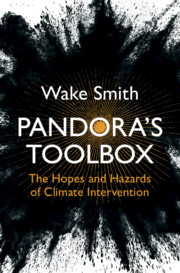Refine search
Actions for selected content:
46 results
Chapter 15 - The Kangaroo Exercise Series, 1989–1995
- from Part 6 - Deployment challenges
-
-
- Book:
- Mobilising the Australian Army
- Published online:
- 23 May 2025
- Print publication:
- 30 May 2025, pp 320-343
-
- Chapter
- Export citation
Chapter 17 - Organising for operations
- from Part 6 - Deployment challenges
-
-
- Book:
- Mobilising the Australian Army
- Published online:
- 23 May 2025
- Print publication:
- 30 May 2025, pp 368-386
-
- Chapter
- Export citation
Chapter 16 - Auditing force projection
- from Part 6 - Deployment challenges
-
-
- Book:
- Mobilising the Australian Army
- Published online:
- 23 May 2025
- Print publication:
- 30 May 2025, pp 344-367
-
- Chapter
- Export citation
What Do 32 COVID-19 Deployments of Emergency Medical Teams Tell Us about Challenges and Lessons Learned?
-
- Journal:
- Disaster Medicine and Public Health Preparedness / Volume 19 / 2025
- Published online by Cambridge University Press:
- 28 March 2025, e74
-
- Article
-
- You have access
- Open access
- HTML
- Export citation
Designing emerging technologies taking into account upscaling
- Part of
-
- Journal:
- Design Science / Volume 10 / 2024
- Published online by Cambridge University Press:
- 25 October 2024, e24
-
- Article
-
- You have access
- Open access
- HTML
- Export citation
More Process, Less Principles: The Ethics of Deploying AI and Robotics in Medicine
-
- Journal:
- Cambridge Quarterly of Healthcare Ethics / Volume 33 / Issue 1 / January 2024
- Published online by Cambridge University Press:
- 24 April 2023, pp. 121-134
-
- Article
-
- You have access
- Open access
- HTML
- Export citation
4 - The Impact of Line-of-Sight Transmissions on Ultra-Dense Wireless Networks
- from Part II - Fundamentals of Ultra-Dense Small Cell Networks
-
- Book:
- Fundamentals of Ultra-Dense Wireless Networks
- Published online:
- 17 June 2022
- Print publication:
- 30 June 2022, pp 103-146
-
- Chapter
- Export citation
Effectiveness of a COVID-19 Preventive Sequestration Strategy: Deployment of the Aircraft Carrier USS Ronald Reagan (CVN-76)
-
- Journal:
- Disaster Medicine and Public Health Preparedness / Volume 16 / Issue 6 / December 2022
- Published online by Cambridge University Press:
- 23 March 2022, pp. 2409-2411
-
- Article
- Export citation
Experience of Living with COVID-19: Personal Preparedness and Coping Mechanism Among Deployed Healthcare Workers
-
- Journal:
- Disaster Medicine and Public Health Preparedness / Volume 16 / Issue 6 / December 2022
- Published online by Cambridge University Press:
- 04 March 2022, pp. 2406-2408
-
- Article
- Export citation

Pandora's Toolbox
- The Hopes and Hazards of Climate Intervention
-
- Published online:
- 24 February 2022
- Print publication:
- 24 March 2022
Long-term risk for mental health symptoms in Dutch ISAF veterans: the role of perceived social support
-
- Journal:
- Psychological Medicine / Volume 53 / Issue 8 / June 2023
- Published online by Cambridge University Press:
- 18 January 2022, pp. 3355-3365
-
- Article
- Export citation
Chapter 3 - Technologies of Proximity
-
- Book:
- Dear John
- Published online:
- 04 January 2022
- Print publication:
- 06 January 2022, pp 86-113
-
- Chapter
- Export citation
Chapter 7 - Severed Ties and Suicide
-
- Book:
- Dear John
- Published online:
- 04 January 2022
- Print publication:
- 06 January 2022, pp 211-238
-
- Chapter
- Export citation
Experiences and perceptions from non-internal medicine clinicians deployed to COVID-19 units
-
- Journal:
- European Psychiatry / Volume 64 / Issue S1 / April 2021
- Published online by Cambridge University Press:
- 13 August 2021, p. S670
-
- Article
-
- You have access
- Open access
- Export citation
Deploying Health Care Providers During the COVID-19 Pandemic
-
- Journal:
- Disaster Medicine and Public Health Preparedness / Volume 16 / Issue 6 / December 2022
- Published online by Cambridge University Press:
- 19 April 2021, pp. 2669-2672
-
- Article
-
- You have access
- Open access
- HTML
- Export citation
Factors That Affect Emergency Responder Wellbeing: Considerations for Public Health Responders
-
- Journal:
- Disaster Medicine and Public Health Preparedness / Volume 16 / Issue 2 / April 2022
- Published online by Cambridge University Press:
- 05 April 2021, pp. 809-817
-
- Article
- Export citation
Examining the development of PTSD symptoms in individuals who witness acute stress reaction on the battlefield
-
- Journal:
- BJPsych Open / Volume 7 / Issue 3 / May 2021
- Published online by Cambridge University Press:
- 01 April 2021, e74
-
- Article
-
- You have access
- Open access
- HTML
- Export citation
Long-term development of post-traumatic stress symptoms and associated risk factors in military service members deployed to Afghanistan: Results from the PRISMO 10-year follow-up
-
- Journal:
- European Psychiatry / Volume 64 / Issue 1 / 2021
- Published online by Cambridge University Press:
- 21 December 2020, e10
-
- Article
-
- You have access
- Open access
- HTML
- Export citation
9 - Overseas Service
-
- Book:
- Sisters in Arms
- Published online:
- 31 August 2020
- Print publication:
- 03 September 2020, pp 174-200
-
- Chapter
- Export citation
Forward psychiatry – early intervention for mental health problems among UK armed forces in Afghanistan
-
- Journal:
- European Psychiatry / Volume 39 / January 2017
- Published online by Cambridge University Press:
- 23 March 2020, pp. 66-72
-
- Article
- Export citation
